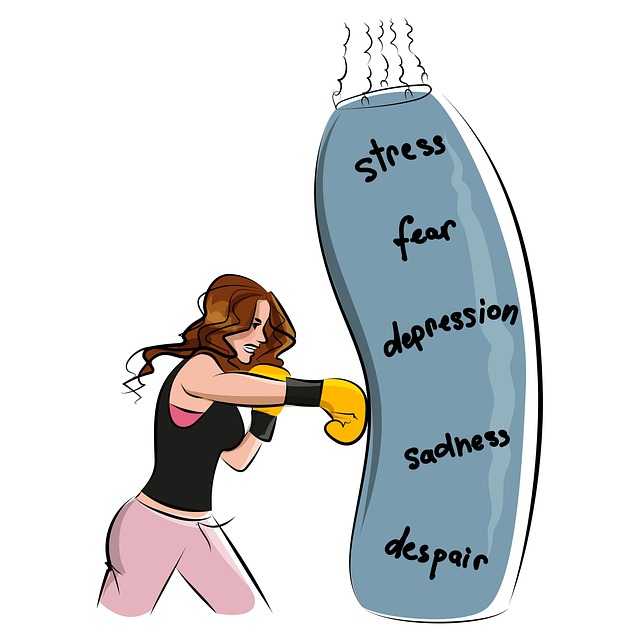Parker Anxiety Therapy (PAT) prioritizes client safety through comprehensive risk assessment, identifying and mitigating potential harms during sessions and interventions. Their evidence-based approach combines cognitive-behavioral techniques, mindfulness practices, and personalized interventions to alleviate anxiety symptoms. PAT incorporates individual assessments, cultural sensitivity, social factor analysis, and Mental Illness Stigma Reduction Efforts, ensuring inclusive and empowering practices for diverse clients. Regular evaluation and monitoring, along with proactive measures like trigger identification and resilience-building techniques, foster long-term mental wellness and empower clients to manage anxiety effectively.
Risk assessment and harm minimization planning are essential components of safe therapy practice. This article guides therapists through a structured approach, using strategies from Parker Anxiety Therapy, to ensure client well-being. We begin by establishing a solid understanding of risk assessment in therapy, followed by identifying and evaluating potential harms. Next, we delve into developing a comprehensive minimization plan, culminating in practical implementation and ongoing monitoring for safe practice.
- Understanding Risk Assessment in Therapy: A Foundation for Safety
- Identifying and Evaluating Harms: Potential Threats to Client Well-being
- Developing a Comprehensive Minimization Plan: Strategies for Intervention
- Implementation and Monitoring: Ensuring Safe Practice with Parker Anxiety Therapy
Understanding Risk Assessment in Therapy: A Foundation for Safety

Risk assessment is a cornerstone of therapeutic practice, especially within Parker Anxiety Therapy, where prioritizing client safety is paramount. It involves meticulously evaluating potential risks and hazards that might arise during therapy sessions or as a result of implementing specific interventions. By conducting thorough risk assessments, therapists can identify and mitigate concerns, ensuring a secure environment for clients to explore their emotions and challenges. This process empowers individuals to engage in therapy with confidence, knowing their well-being is at the forefront.
At Parker Anxiety Therapy, we understand that each client’s journey is unique, and their experiences may introduce diverse risks. Our approach incorporates not only individual risk assessments but also considers the broader context of cultural sensitivity in mental healthcare practice and the impact of social factors on one’s mental health. Additionally, we recognize the role of Mental Illness Stigma Reduction Efforts in fostering an inclusive space where clients feel empowered to share their stories without fear of judgment. This comprehensive approach ensures that our harm minimization planning is not only effective but also respectful of diverse needs and backgrounds.
Identifying and Evaluating Harms: Potential Threats to Client Well-being

Identifying and evaluating harms is a crucial step in risk assessment for mental health professionals, such as those at Parker Anxiety Therapy. This process involves meticulously scanning all potential threats to a client’s well-being, both during therapy sessions and beyond. It encompasses not just the obvious risks like self-harm or suicide ideation but also more subtle issues like exacerbating existing conditions, triggering past traumas, or inadvertently causing distress through therapeutic techniques.
Effective harm minimization planning relies on thorough assessment of these identified harms. Mental health professionals can use empathy building strategies to engage clients in this process, fostering open communication about concerns and fears. Additionally, the insights gained inform adjustments to treatment plans, ensuring they remain client-centered and safe. This proactive approach, integral to risk assessment for mental health professionals, ultimately contributes to positive outcomes in the production of a Mental Wellness Podcast Series designed to educate and inspire listeners on their journey towards mental wellness.
Developing a Comprehensive Minimization Plan: Strategies for Intervention

Developing a comprehensive harm minimization plan is a crucial step in ensuring the well-being and resilience of individuals, especially those undergoing therapy for anxiety disorders, such as those managed by Parker Anxiety Therapy. This strategy involves implementing proactive interventions to mitigate potential risks and promote mental wellness. One effective approach is to identify triggers and early warning signs, enabling swift action to prevent escalation. For instance, establishing clear communication channels allows for immediate support when clients experience heightened anxiety or distress.
Additionally, resilience building techniques can be integrated into the plan. Encouraging healthy coping mechanisms, such as mindfulness practices and stress management skills, empowers individuals to navigate challenging situations. Regular check-ins and ongoing monitoring facilitate timely interventions, preventing burnout and promoting sustained mental wellness. By combining these strategies, therapists can create a robust framework that supports clients in managing anxiety effectively and fostering long-term resilience.
Implementation and Monitoring: Ensuring Safe Practice with Parker Anxiety Therapy

The successful implementation and monitoring of Parker Anxiety Therapy (PAT) protocols are paramount to fostering a safe and supportive therapeutic environment. PAT, renowned for its evidence-based approach, emphasizes the integration of various strategies tailored to individual needs. This comprehensive method includes cognitive-behavioral techniques, mindfulness practices, and personalized interventions aimed at alleviating anxiety symptoms.
Regular monitoring and evaluation play a pivotal role in ensuring the effectiveness and adaptability of PAT. The Stress Management Workshops Organization (SMWO) highlights the importance of cultural sensitivity in mental healthcare practice, encouraging therapists to stay updated with diverse cultural perspectives. By embracing this approach, professionals can enhance their understanding of patients’ backgrounds, leading to improved self-esteem improvement and overall treatment outcomes.
Risk assessment and harm minimization planning are essential components of safe practice in therapy, particularly within the context of Parker Anxiety Therapy. By understanding the foundational principles of risk assessment and identifying potential harms, therapists can develop comprehensive minimization plans that effectively intervene and mitigate threats to client well-being. Successful implementation and ongoing monitoring ensure that these strategies remain dynamic and responsive to changing circumstances, fostering a safe environment for all clients engaging in Parker Anxiety Therapy.











